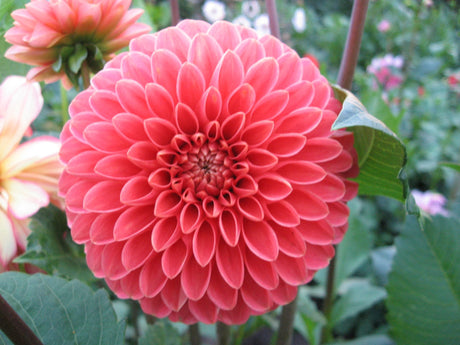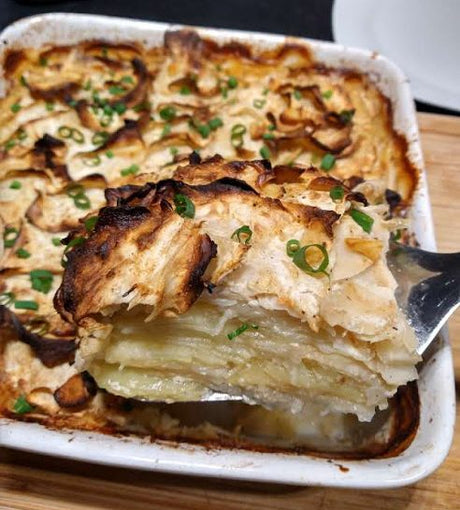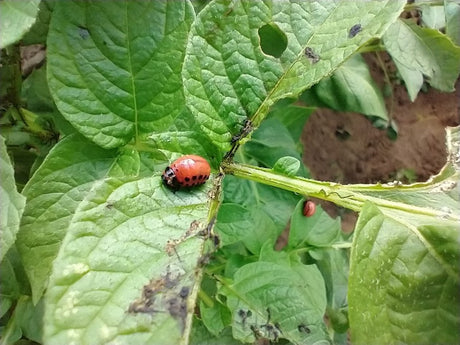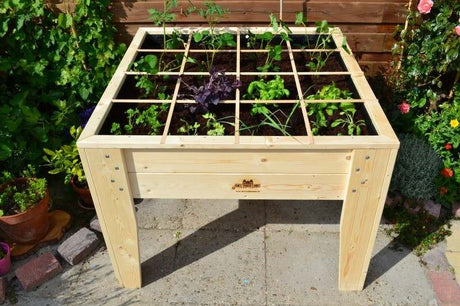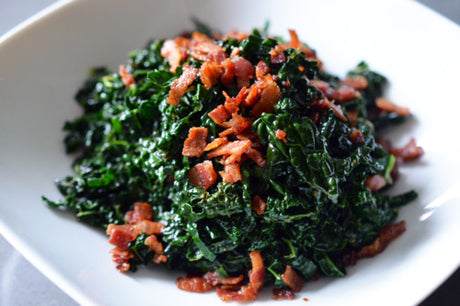Soft fruit in your own garden is a joy: every summer you pick the juiciest berries, raspberries, and blackberries straight from the bush. Row cropping keeps your plants well-organized, healthy, and productive. Our own row crops include thornless blackberries, tayberries (now also available thornless), Japanese wineberries, and black raspberries . These are varieties that lend themselves perfectly to this cultivation method.
In this blog post, I'll show you step by step how to create a soft fruit row: from preparing the soil and planting the bushes to caring for them and, of course, harvesting them in the summer.
📹 Extra fun: I've added videos where you can watch the construction, planting and harvesting process.
What is row cropping of soft fruits?
Row planting means planting your soft fruit in neat rows, often supported by wire or stakes. This creates a clear overview, healthy plants, and a better harvest. It makes pruning, tending, and picking much easier than having individual bushes scattered throughout the garden.
Suitable crops include redcurrants, blueberries, and gooseberries. But varieties that require vines or support, such as thornless blackberries, tayberries, Japanese wineberries, and black raspberries , thrive in rows.
Preparing the soil
Proper soil preparation largely determines the success of your soft fruit row crop. These are the steps we followed ourselves:
Weeding
Make sure the area where you're going to plant is clear of grass and stubborn weeds. You can do this by weeding by hand, but also by covering the soil for a year with, for example, agricultural plastic or cardboard. After a season, the soil will be clean and aerated, and you'll have much less trouble with competing roots.
Add compost
Before planting, work a generous layer of compost into the soil. This improves soil structure, increases organic matter content, and gives young plants a healthy start.
Planting
Plant the soft fruit varieties in a straight row, with the correct spacing between plants (depending on the variety). Also consider supporting structures when training crops like thornless blackberries, tayberries, or Japanese wineberries . Later in this blog post, you'll find a video and clear written instructions showing step-by-step how we did this.
Covering the ground: green manure or mulch
- Under the rows of climbing plants (such as Japanese wineberry and tayberry), we've chosen a low-growing green manure with plenty of clover . This creates a vibrant, fertile soil that fixes nitrogen and offers minimal competition to the main crops.
- We prefer to use a mulch layer under rows of individual shrubs (such as honeysuckle and apple trees). We use a combination of cardboard, comfrey leaves, sheep's wool, and straw. This keeps the soil moist, nourishes soil life, and suppresses weeds.
This approach keeps the soil fertile and weed-free, while your soft fruit plants can develop in peace.

Laying out and planting the rows
Once the soil is prepared, you can start laying out and planting the rows. This takes some initial work, but you'll enjoy it for years to come.
- Installing posts: Place sturdy posts every 4 to 5 meters in the row. This forms the foundation of your support system. Our posts are 250 cm long and are from Van Vliet Duurzaam Hout.
- Stretching wires: Stretch horizontal wires between the posts. These serve as support for the plants when they develop long tendrils, such as with Japanese wineberries, tayberries, or thornless blackberries. This prevents everything from growing tangled together and makes pruning and harvesting much easier.
- Spacing out plants: plant one plant every 1 meter . This might seem a bit bare at first, but from the second year of growth onward, new canes will already be forming in abundance. In our soft fruit videos, you can see how quickly the rows fill up.
- Planting: Dig a hole large enough for the roots, plant the plant at the same depth as it was in the pot, and press the soil firmly. Water generously to ensure the plant establishes well.
- Supporting and training: Carefully tie young shoots to the lower wire. As the plants grow, you can train new shoots along the higher wires.
In the videos below, we show you how we tackled this in our own garden. Sometimes a picture is worth a thousand words!



